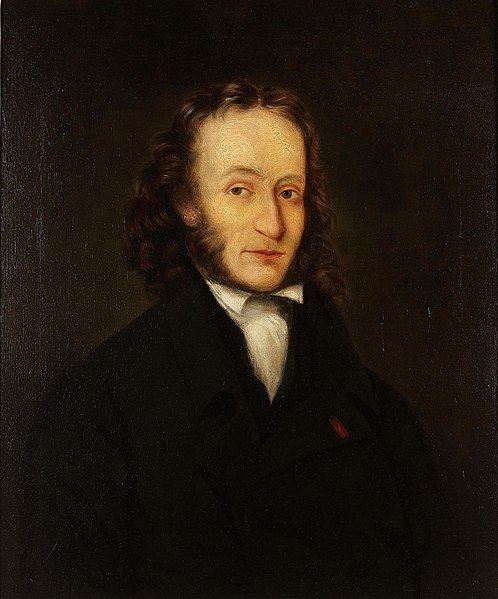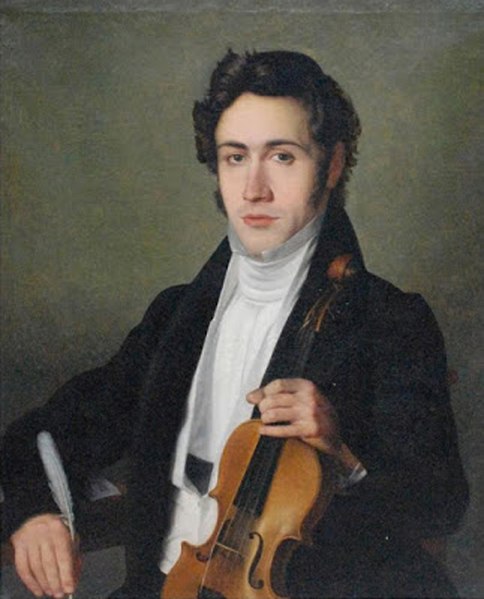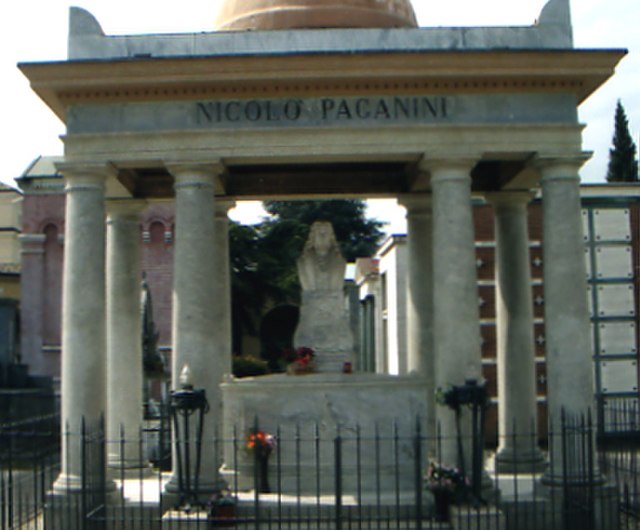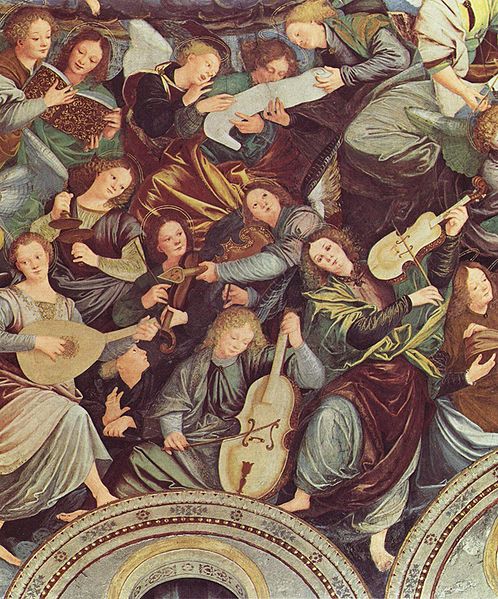Niccolò Paganini was an Italian violinist and composer. He was the most celebrated violin virtuoso of his time, and left his mark as one of the pillars of modern violin technique. His 24 Caprices for Solo Violin Op. 1 are among the best known of his compositions and have served as an inspiration for many prominent composers.
Paganini in 1836 by John Whittle
Portrait of a young Paganini
1831 bulletin advertising a performance of Paganini
Tomb of Paganini in Parma, Italy
The violin, colloquially known as a fiddle, is a wooden chordophone, and is the smallest, and thus highest-pitched instrument (soprano) in regular use in the violin family. Smaller violin-type instruments exist, including the violino piccolo and the pochette, but these are virtually unused. Most violins have a hollow wooden body, and commonly have four strings, usually tuned in perfect fifths with notes G3, D4, A4, E5, and are most commonly played by drawing a bow across the strings. The violin can also be played by plucking the strings with the fingers (pizzicato) and, in specialized cases, by striking the strings with the wooden side of the bow.
The cupola of Madonna dei Miracoli in Saronno, Italy, with angels playing violin, viola, and cello, dates from 1535 and is one of the earliest depictions of the violin family.
1658 Baroque violin by Jacob Stainer
The construction of a violin
Closeup of a violin tailpiece, with a fleur-de-lis








